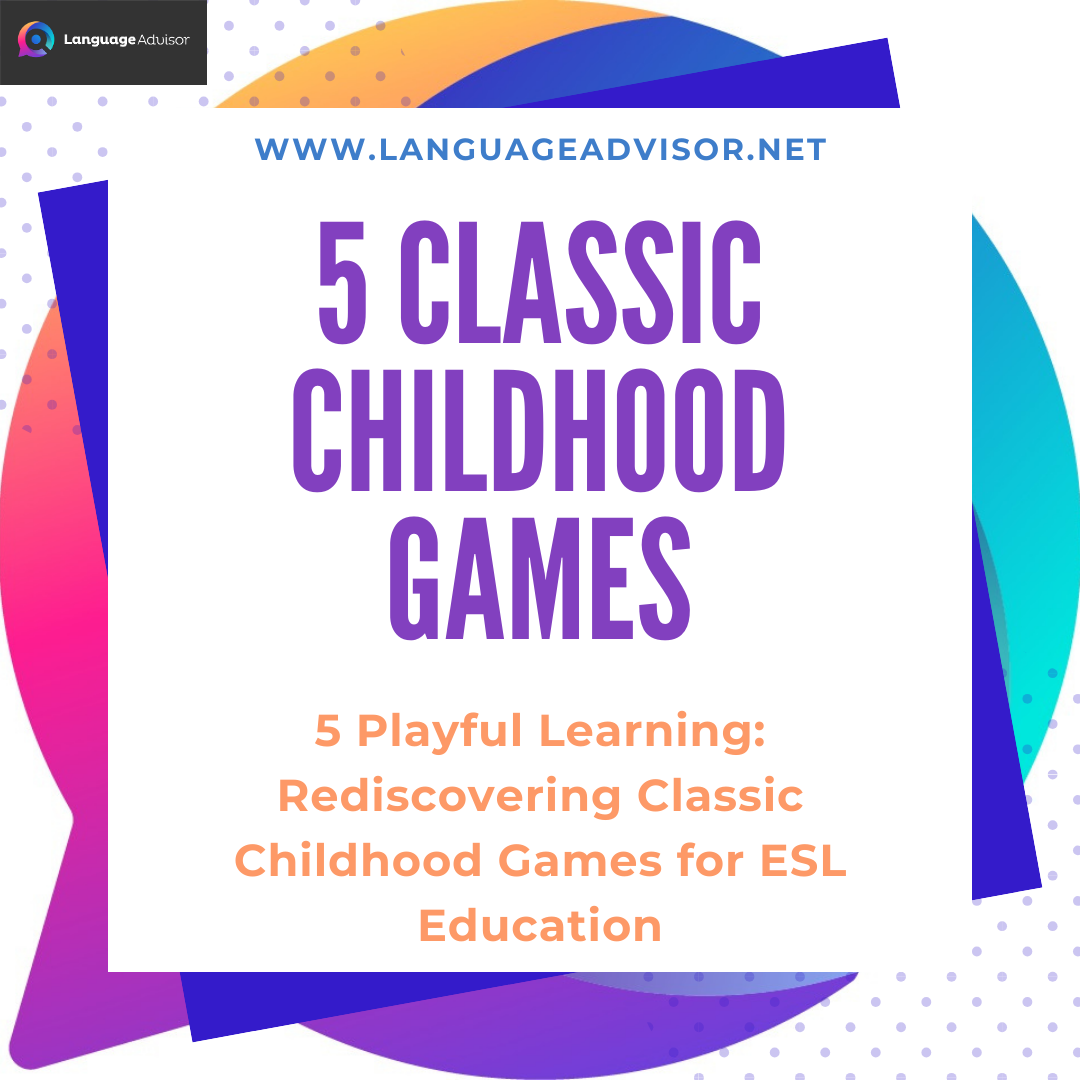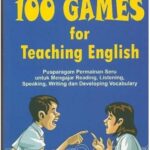5 Classic Childhood Games. Playful Learning: Rediscovering Classic Childhood Games for ESL Education
5 Classic Childhood Games

Are you ready to infuse a sense of nostalgia into your ESL classroom while simultaneously enhancing language skills? In this blog post, we’re stepping back in time to revisit classic childhood games and explore how they can be adapted to facilitate English language learning. From traditional favorites like “Simon Says” to timeless classics like “I Spy,” these beloved games offer a wealth of opportunities for students to practice vocabulary, improve communication, and foster teamwork. Join us as we rediscover the joy of childhood play and uncover the educational benefits these timeless games can bring to your ESL lessons.
Let’s embark on a journey to make learning English both playful and memorable for your students!
5 Classic Childhood Games

I Spy

You may remember this entertaining word game from your childhood
- Age/Level: Young learners
- Time: 10 minutes
- Players: Individual
- Preparation: None
- Aim: To look for something beginning with a certain letter
Procedure
Have the students sit down in a circle.
One student looks for something in the classroom or surrounding area and says, “I spy with my little eye, something beginning with (the first letter of the chosen object)…”
This is the only clue the other students get.
The other students then take it in turns to try to guess what it is.
When someone guesses the word correctly, they get to choose something.

Mr Crocodile
This ESL childhood game is a lot of fun for young learners and can be used to teach or revise clothes, appearance or colours

- Age/Level: Young learners
- Time: 20 minutes
- Players: Individual
- Preparation: A blindfold
- Aim: To revise clothes, appearance or colours
Procedure
One student is chosen to be ‘Mr Crocodile’. He or she stands in the middle of the classroom. The rest of the students line up at one end of the classroom.
The students say, “Hey Mr Crocodile, let us cross the river. If not, why not? We’re on our way to school.”
Mr Crocodile then lets people pass who match a certain criteria. This could be people wearing certain clothing, the way someone looks or a colour someone is wearing. So, Mr Crocodile might reply “People wearing a T-shirt can pass.”
The students matching the criteria set by Mr Crocodile walk to the other side of the room. They are safe.
Mr Crocodile then puts on a blindfold, and the other students try to run past without being tagged.
If a student is tagged by the crocodile, they are out.
This process is repeated until there is only one student left. That student is the winner.

Mr Wolf
You may have played this delightful childhood game when you were a kid. It works equally well in the ESL classroom.

- Age/Level: Young learners
- Time: 15 minutes
- Players: Individual
- Preparation: None
- Aim: To practice time or numbers
Procedure
One student is the wolf. The wolf stands with their back turned to the other students at one end of the classroom.
The other students line up against the opposing wall.
The students say, “What’s the time Mr Wolf?”
The wolf turns to face the students and shouts out a time, e.g. 7 o’clock. The wolf can only look at the students when he or she tells the time.
The students then take seven steps toward the wolf. The students always take the same amount of steps toward the wolf as the number of hours in the wolf’s time, e.g. 3 o’clock = 3 steps, 9 o’clock = 9 steps, etc.
The wolf then turns around, and the students shout, “What’s the time Mr Wolf?” and so on.
When the students get close to the wolf, the students shout, “What’s the time Mr Wolf?” and the wolf says, “Dinner time!”
The wolf then runs after the students who are running back to the opposing wall. If the wolf catches a student before they get to the wall, they become the wolf.

Red Light, Green Light
Here is a childhood game for teaching numbers or the alphabet

- Age/Level: Young learners
- Time: 15 minutes
- Players: Individual
- Preparation: None
- Aim: To revise numbers or letters of the alphabet
Procedure
Choose one student to come up to the front of the class and be the announcer.
The announcer’s job is to say, “Red light” and “Green light.” Red light means stop writing and green light means start writing.
The other students are players. Have the players come up to the board and give each student a board marker. If you have limited space, students can play in rounds.
The players at the board are given certain things to write, e.g. the alphabet, numbers 1 to 25, etc.
When the announcer says, “Green light,” the players start writing as quickly as they can. When the announcer says, “Red Light,” the players must freeze and stop writing.
Any player who is caught writing after the red light announcement is out of the game and must sit down.
The first player to complete the task on the board correctly becomes the new announcer.
You can vary the game by changing the stop and go commands to other synonyms. You can also blindfold the announcer if you wish.

Simon Says
This is a classic ESL game for young learners. It’s ideal for teaching imperatives.

- Age/Level: Young learners
- Time: 10 minutes
- Players: Individual
- Preparation: None
- Aim: To practice imperatives
Procedure
Have the students stand in front of their chairs.
Give a command to the students by saying ‘Simon says’ followed by an imperative, e.g. sit down.
Students must only respond to you when you use the phrase ‘Simon says’. If a student responds when you don’t use ‘Simon says’, they are out.
The last student left is the winner. Example:
Teacher: Simon says sit down. Everyone sits down.
Teacher: Simon says touch your head. Everyone touches their head.
Teacher: Stand up.
Tim and Helen stand up. Everyone else doesn’t move. Tim and Helen are out.

5 Classic Childhood Games. Here are some other English ESL resources












